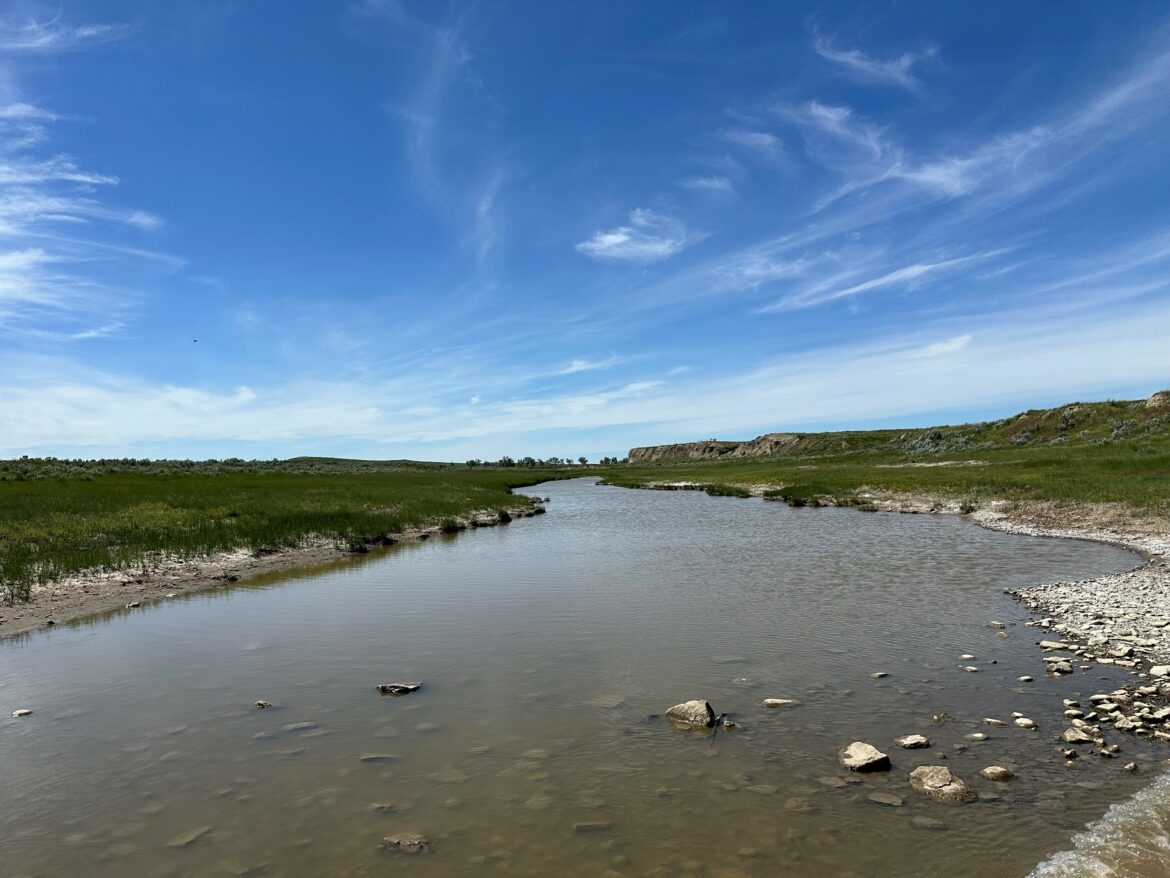The Montana Department of Natural Resources and Conservation (DNRC) has released its 2024 Montana Drought Outlook Report. According to the report, much of Montana is facing abnormally dry to severe drought conditions resulting from low snowpack and below average precipitation during spring and early summer. Depending upon accumulated precipitation and temperatures over the next four to six weeks, the net deficits in June could result in the onset of widespread drought by late July.
The Montana Drought Outlook Report is an annual report compiled by water planning staff at the DNRC. The 2024 report is available online at: https://drought.mt.gov/_docs/DWSAC-Materials/Montana-Drought-Outlook-Report-Summer-2024-1.pdf
According to the report, 40 percent of the state is classified in moderate to severe drought, with another 57 percent showing abnormally dry conditions.
“Following the warm and dry winter, May’s cooler temperatures and above average precipitation provided a boost for areas nearing extreme to severe drought by late April. Unfortunately, June has been much drier than average, and the consequences of a hot and dry July could be severe,” said Michael Downey, DNRC’s drought program coordinator.
In the southern half of the state, drought conditions were milder than average last year with most of the area drought free by fall. Those conditions provided a buffer against this winter’s warmer and drier conditions. Soil moisture indicators for much of Montana are average, however areas of dryness are beginning to appear in the west, south central and southeast regions of the state.
Lack of snowpack in the mountains during this past winter also resulted in low streamflow. Most state and federal reservoirs did manage to fill this spring as a result of proactive reservoir management. However, without at least average rainfall in the next month, streamflow and surface water levels will likely decrease across the state.
The Montana Drought Outlook Report provides a synopsis of recent statewide precipitation and temperature trends, snowpack information, an outlook on summer water supplies and an update on current and forecasted drought conditions. This report was developed pursuant to MCA 2-15-3308(5).
The report is compiled and prepared through the Drought and Water Supply Advisory Committee – a multi-agency committee chaired by DNRC Director Amanda Kaster. Its responsibilities include developing a state drought management plan, performing water supply assessments, reporting on local drought impacts, identifying mitigation strategies, and directing financial, technical, and human resources to assist in regional and local drought management efforts.
Key Take-Aways:
- Much of the state, particularly the northern half of Montana, is entering its fifth consecutive year of abnormally
dry or drought conditions. Despite warmer temperatures this winter and a record low snowpack in some
watersheds, wetter than average conditions last fall and in May have sustained soil moisture in advance of this
summer. - Below average temperatures and above average precipitation in May boosted snowpack at high elevations and
slowed run-off. However, below average precipitation in April and in June have resulted in the early onset of
drought conditions statewide with abnormally dry and moderate to severe drought conditions advancing prior
to the onset of the dry season. - Outside of the northwest, Montana’s reservoirs benefitted this year from high carry-over in 2023. Most of
Montana’s state and federal water projects filled this spring. With inflows diminishing due to low snowpack,
reservoir levels could fall quickly this summer. - Streamflows in western Montana are predominantly below to much below average at the end of June.
Streamflows in eastern Montana are mostly average to above average at some locations. The winter’s low
snowpack is likely to result in greatly diminished streamflows statewide by mid-summer. Local conditions will
depend largely on regional temperatures and summer precipitation. - Surface water storage levels at state reservoirs, are mostly above average. Conditions at private reservoirs and
dugouts vary by location. The area east of the Continental Divide along the Rocky Mountain Front is the most
compromised and is likely to suffer shortages in stock ponds and smaller reservoirs. - The outlook for significant wildfire potential is normal across Montana. Moisture that fell in May is expected to
delay the start of significant fires around the Northern Rockies, especially east of the Continental Divide.
Continuing dryness through the summer and early fall months is expected to extend the end of fire season. - These combined drought indicators offer a negative drought outlook for the remainder of the summer and early
fall. Conditions could worsen quickly in the event of much above average temperatures and below average
precipitation in the coming weeks and months.
###
DNRC


